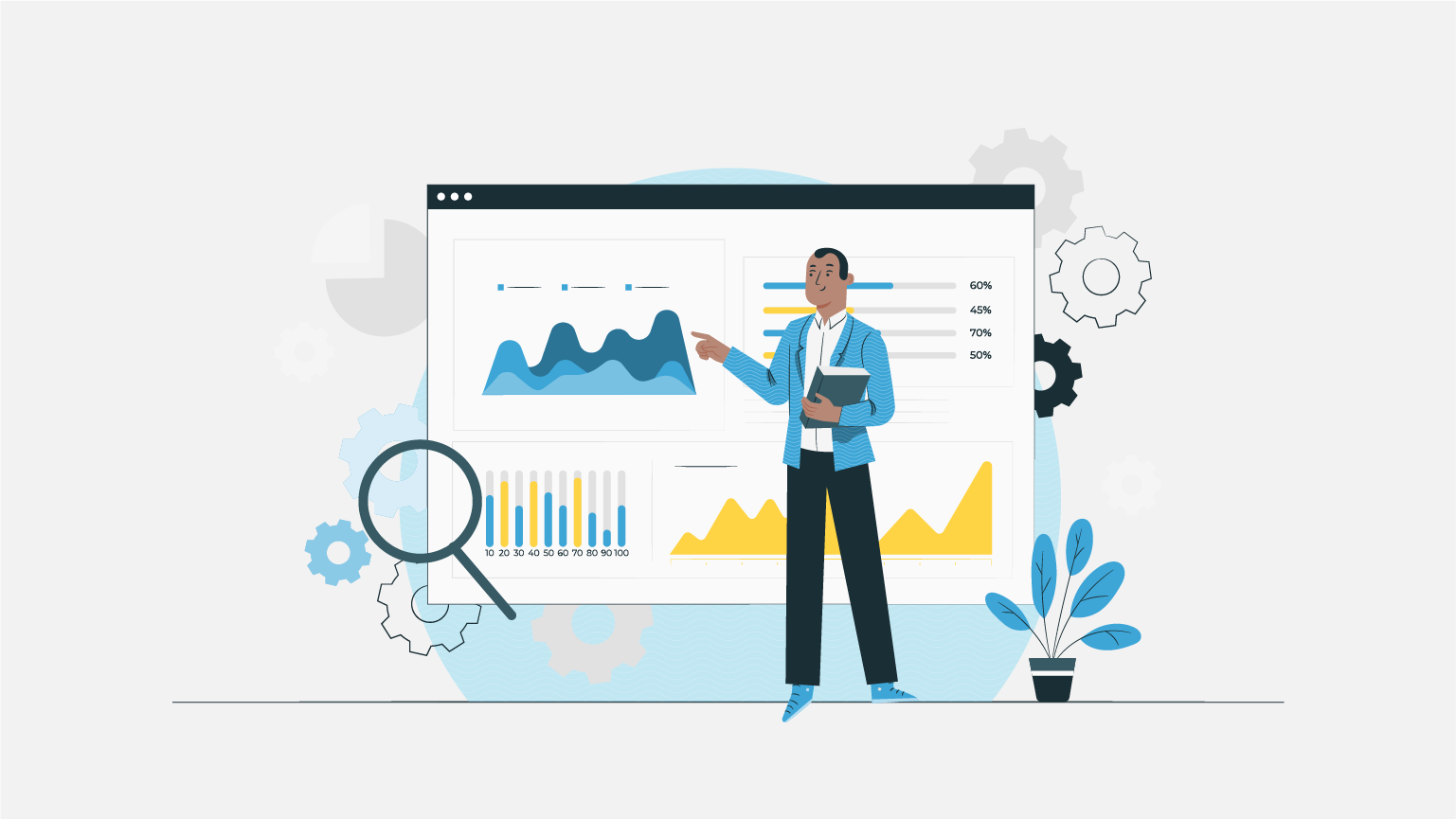In today’s ever-evolving business environment, the importance of making data-driven decisions has become crucial for the success of any company. Businesses can benefit tremendously by utilising the power of helpdesk software analytics to make educated decisions and enhance their operations. Businesses can gather information about customer behaviour, agent performance, and overall service quality by utilising analytics. In this blog you will understand the importance of helpdesk analytics, the types of data that can be analysed, and how businesses can efficiently leverage this data to make informed decisions.
The Importance of Helpdesk Analytics
In today’s competitive market, customer satisfaction is the most important thing. Customers expect rapid, effective solutions to their queries, and helpdesk analytics plays a vital role in fulfilling these expectations. By utilizing data from support interactions, businesses can analyse trends, assess performance, and improve their support processes.
Benefits of Helpdesk Analytics
Improved Customer Satisfaction: By leveraging the feedback received from the support interactions, organizations can create customised services as per the needs of the customer. Analytics can give an insight into where the customer is finding difficulties and allow businesses to make improvements in those areas.
Enhanced Agent Performance: Helpdesk analytics also give an insight into the performance of the agents, which allows managers to identify where is the training required and who are the high performers. By analysing key metrics such as response times, resolution rates, and customer feedback, businesses can execute training programs that improve agent skills.
Operational Efficiency: Helpdesk analytics can highlight the areas where the support process is not very efficient. By recognising bottlenecks and areas of high-ticket volume, businesses can streamline operations and deploy resources more effectively, which ultimately reduces costs and improves service delivery.
Data-Driven Decision-Making: With access to data in hand, teams can create their strategies on the basis of the information rather than assumptions. This will help them create more effective planning and resource allocation, making sure that investments are done on the initiatives that will yield the highest returns.
Types of Data Analysed in Helpdesk Analytics
1. Ticket Volume and Trends
Analysing ticket volume over a period of time helps businesses understand what are the trends in peak periods, trends in different seasonal and festive trends. This data is important for allocating resource planning and making sure that adequate staff is available during busy times.
2. Response and Resolution Times
Metrics such as first response time and average resolution time provide important information about the capability of the support team. By analysing these metrics, businesses can set benchmarks and identify areas for improvement.
3. Customer Feedback and Satisfaction Scores
Gathering customer feedback through surveys and satisfaction scores (CSAT) helps organizations to evaluate customer sentiment. Analysing this information helps identify strengths and weaknesses in service delivery.
4. Agent Performance Metrics
Metrics such as ticket resolution rates, customer satisfaction scores per agent, and average handling time offer important data on individual agent performance. This information can help in recognizing if training initiatives.
5. Knowledge Base Utilization
Customer interaction and when they refer knowledge base is a pure indication of its effectiveness. Identifying which articles are referred to the most, can help companies improve their knowledge management strategies.
Utilizing Helpdesk Analytics for Data-Driven Decisions
To effectively utilise helpdesk analytics, businesses must adopt a systematic approach:
1. Implement Robust Analytics Tools
Spending on advanced helpdesk software that has a built-in analytics system is very important. Tools like Faveo helpdesk provide features like reporting dashboards, predictive analytics, and sentiment analysis, which helps businesses gain doable insights from their data.
2. Define Key Performance Indicators (KPIs)
Having clear KPIs synchronised with business objectives is very important. Common KPIs incorporate ticket resolution rate, customer satisfaction score, and average response time. These metrics should be periodically monitored and analyzed to enhance performance.
3. Regularly Review and Analyze Data
Conducting regular reviews of helpdesk data allows organizations to identify trends and make informed decisions. This can include weekly or monthly reports that highlight key metrics, trends, and areas for improvement.
4. Foster a Culture of Continuous Improvement
Fostering a culture of continuous development within the support team is very important. By periodically sharing information from analytics, businesses can motivate agents to improve their performance and provide overall service quality.
5. Use Predictive Analytics
Predictive analytics can help businesses find out customer issues before they arise. By analysing historical data, companies can recognize patterns and trends that show problems, which allows them to take pre-emptive actions to mitigate these issues.
Challenges in Implementing Helpdesk Analytics
There are several benefits of helpdesk analytics, but companies can face challenges in implementation:
Data Overload
As there is a huge amount of data generated daily, businesses may find it too difficult to recognise which metrics are the most relevant. It is important to target key metrics that align with business goals.
Integration Issues
Combining analytics tools with existing helpdesk systems can be difficult. Businesses should make sure that their tools can effectively provide data to have a comprehensive view of performance.
Resistance to Change
Many employees may find it difficult to understand new tools hence they can oppose adopting new analytics tools and processes. It is important to provide training and educate them on the benefits of using new tools.
Final Thoughts
Helpdesk analytics is a powerful tool for companies that are aiming to improve their customer service operations. By using data-driven insights, organizations can enhance customer satisfaction, optimize agent performance, and drive operational efficiency. While issues exist in implementing analytics, the benefits will balance the challenges. As businesses continue to give importance to customer experience, helpdesk analytics will play a critical role in building their strategies and ensuring success in the competitive market. Investing in the right tools, encouraging a culture of continuous improvement, and targeting relevant metrics will help businesses make informed, data-driven decisions that improve their support operations and eventually lead to greater customer loyalty and business success.


